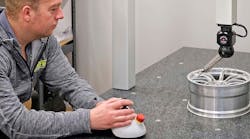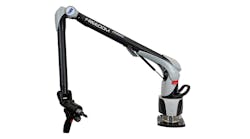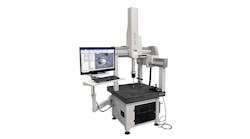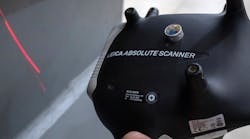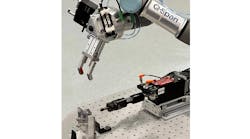By Dennis Westhoff
Global Business Development Manager at Sunnen Products
In oil-patch metalworking and fabrication, I.D. finishing of orifice meter tubes is one job that may be just low-tech enough that it’s still typically tackled using a die grinder and some form of homemade hone. These manual hones have dominated in this application because they simply do not demand the power, precision and higher cost of an industrial tube hone. However, this could be changing with the introduction of low-cost, automated tube hones that can use legacy tooling.
Meter tubes, also called “meter runs,” are critical parts of the orifice meter, a device that’s been used to measure gas flows for more than a century. More than a million orifice meters are used in the United States, often as custody transfer points to determine billing amounts. For this reason, there’s an expectation of high accuracy, and the meter tubes play an important role.
Orifice meters have no moving parts. They consist of specified lengths of “meter quality” pipe on either side of an orifice plate, which may be several inches thick, with a precisely sized round hole in it. Gas flow through the pipeline is restricted slightly by the size of the orifice, and the pressure difference on either side of the orifice, measured by sensors in the meter tube immediately upstream and downstream, is used to compute fluid flow.
Accuracy of the orifice meter requires a laminar gas flow, which the meter tube aids. The meter run provides a length of straight pipe, precisely sized and finished, so that swirl or turbulence in the gas stream smooths out, producing a laminar flow before and after the orifice.
Often a flow conditioner is used inside the meter run upstream from the orifice to help create a laminar flow within a shorter length of pipe. The maximum and minimum surface roughnesses on meter run I.D.s are functions of the beta ratio and nominal diameter of the tube. However, an excessively smooth surface causes turbulence in the gas stream.
The meter run itself is a fabrication with welded flanges or fittings on both ends, so manufacturers must eliminate evidence of the weld bead and restore a correct I.D. surface finish. In the first phase of this multi-step process, the pipe is chucked in a lathe to machine out most of the weld bead, but often the bead is ground down with a die grinder and a burr tool on a long rod. Then, finally, the pipe is honed, typically with a manually stroked homemade hone of some kind.
These homemade hones usually consist of a drill motor with a shaft several meters long that mounts standard honing tools. The lack of power stroking or automatic tool feed make running these homemade rigs a very physically demanding job.
Budget-priced automated tube hones, such as the HTA tube hone from Sunnen, are ideal for meter runs. The allelectric, lighter-duty HTA machine strokes automatically, is clutched and thus safer, provides better accuracy, and quickly pays for itself through reduced cycle times and less operator fatigue and workman’s comp claims.
Additionally, users of the HTA are able to mount ANR275-type tooling, the most widely used tools on manual hones. This system is aimed at “surfacing” applications where stock removal ranges around 0.030 in.
The machine’s base price is less than $50,000 for a 12-ft-stroke model. Included are high-end features such as Siemens drives and PLC control with touch screen HMI for setting all machine parameters – stroke reversal point, spindle/stroking speeds, and crosshatch angle calculation.
HTA models accommodate 6-ft and 12-ft part lengths, bore I.D.s of 2.5 in. to 21 in., maximum part O.D.s of 24 in., and part weights to 4,000 lb. An electronically controlled 3-hp AC gear motor powers the machine’s spindle from zero to 300 rpm, while a servo-driven stroking system provides a speed range of 0 to 90 fpm.



